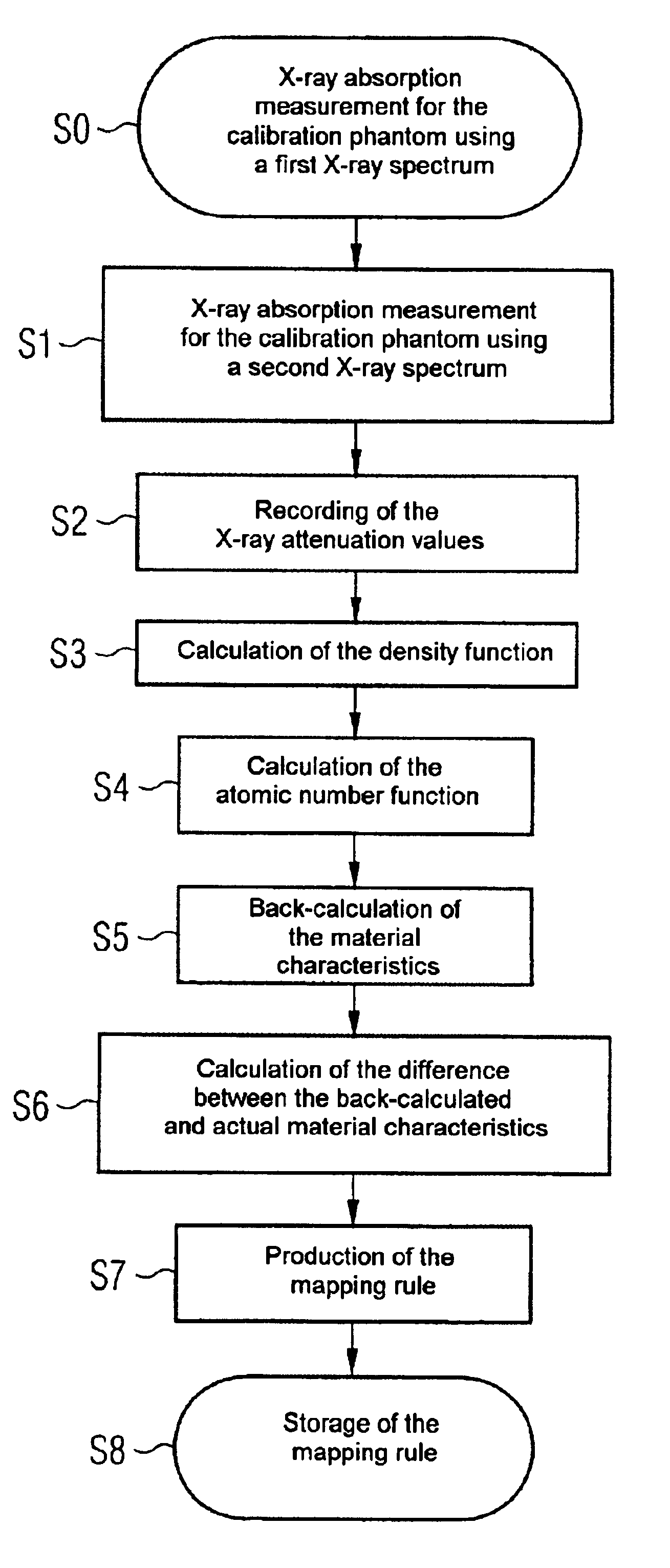Calibration of the transformation of spectral X-ray attenuation values in density and atomic number information
a technology of density and atomic number information, applied in the field of xray system calibration, can solve the problems of difficult to distinguish between calcification close, inability to deduce the material composition of an object being examined from the attenuation value in an x-ray recording, and inability to clearly classify the structure which occurs with increased attenuation values in the imaging process for an x-ray examination
- Summary
- Abstract
- Description
- Claims
- Application Information
AI Technical Summary
Benefits of technology
Problems solved by technology
Method used
Image
Examples
Embodiment Construction
[0028]FIG. 1 shows a calibration phantom 1 for use in the calibration measurement according to an embodiment of the invention. This includes two or more calibration samples 2, which are arranged in a mount material 3. The number of calibration samples 2 should not be less than 3. The calibration samples 2 preferably differ from one another both in their density and in their atomic number. However, it is sufficient for two calibration samples to in each case differ in one of the two parameters.
[0029]The size of the calibration samples must be chosen on the basis of the task of the respective X-ray apparatus to be calibrated. For medical, computer-tomographic examinations, a suitable size for the calibration samples is in the range from millimeters to centimeters. For industrial computer-tomographic or other radiographic examination methods, it may also be suitable to use calibration samples with a size in the decimeter range.
[0030]Solids are preferably used as material for the calibr...
PUM
 Login to View More
Login to View More Abstract
Description
Claims
Application Information
 Login to View More
Login to View More - R&D
- Intellectual Property
- Life Sciences
- Materials
- Tech Scout
- Unparalleled Data Quality
- Higher Quality Content
- 60% Fewer Hallucinations
Browse by: Latest US Patents, China's latest patents, Technical Efficacy Thesaurus, Application Domain, Technology Topic, Popular Technical Reports.
© 2025 PatSnap. All rights reserved.Legal|Privacy policy|Modern Slavery Act Transparency Statement|Sitemap|About US| Contact US: help@patsnap.com



